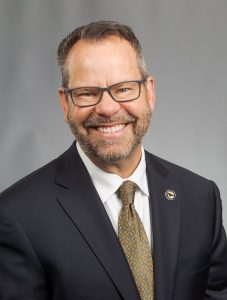Consolidation Implementation Committee approves new college structure
May 24, 2017
After lengthy discussion and a delayed vote, the Consolidation Implementation Committee (CIC) has approved a new college structure for the new consolidated Georgia Southern.
The new college structure consists of nine colleges: the Allen E. Paulson College of Engineering and Computing, the College of Arts and Humanities, the College of Behavioral and Social Sciences, the College of Business, the College of Education, the Waters College of Health Professions, the Jiann-Ping Hsu College of Public Health, the College of Science and Mathematics and the Jack N. Averitt College of Graduate Studies.
The proposal was passed with a 15-11 vote, although not all of the committee members ended up voting. However, President Hebert said that the college structure is not set in stone and could change, but needed to be done in order to move on.
“We couldn’t move forward with continuing to populate our entire organizational structure until an academic structure was in place. [It is] not fair to keep hanging out that uncertainty about everyone’s positions in this new institution. We just need to move forward,” Hebert said. “This is our starting point to move this new institution moving forward, but we are going to always review our administrative efficiencies on an annual basis.”
After discussion at the May 10 meeting and at the May 24 meeting, the CIC decided to go with the original proposal, although faculty members propose a different academic structure proposal.
The CIC will allow professors and deans to study the progression of the proposal on both campuses and if it doesn’t work, they can go back and make the necessary changes.
One topic that remains to be discussed it’s the English department. Georgia Southern CLASS Dean Curtis Ricker, Ph.D., wants the writing and literature departments to remain separate, while Armstrong State representatives want a combined English department. The decision regarding the English department is expected to be discussed at the next meeting.
Dylan John, GS Student Goverment president, said that the GS faculty preferred the second model, which GS professor Richard Flynn, Ph.D. put forth. The conflict with CLASS resided more with the faculty and not the GS students, since faculty was concerned about lack of faculty consultation and bureaucratic problems.
For more information about the consolidation, click here.
Julia Fechter and Tom Barszcz contributed to this report.








